Crane Ship
In place of military trappings, the USS Kearsarge received an immense revolving crane with a rated lifting capacity of 250 tons, as well as hull "blisters," which gave her more stability. The 10,000-ton crane ship rendered invaluable service for the next twenty years. One of many accomplishments was the raising of sunken submarine Squalus off the New Hampshire coast. On 6 November 1941 she was renamed Crane Ship No. 1, allowing her illustrious name to be given to an aircraft carrier, CV-12, and later to CV-33. But she continued her yeoman service and made many contributions to the American victories of World War II. She handled guns, turrets, armor, and other heavy lifts for new battleships such as Indiana (BB-58) and Alabama (BB-60), new cruisers Savannah (CL-42) and Chicago (CA-29), and guns on the veteran battleship Pennsylvania (BB-38).
In 1945, the crane ship was towed to the San Francisco Naval Shipyard where she assisted in the construction of carriers Hornet (CV-12), Boxer (CV-21), and re-construction of the Saratoga (CV-3). She departed the West Coast in 1948 to finish her career in the Boston Naval Shipyard. As Crane Ship No. 1, her name was struck from the Naval Vessel Register 22 June 1955. She was sold for scrapping 9 August 1955.
This is a picture of the testing of the ship's 250-ton revolving crane, at the Philadelphia Navy Yard, Pennsylvania, on 27th of October 1922. USS Kearsarge, which was still undergoing conversion at the time (note the incomplete superstructure ahead of the crane) is seen here lifting a 250-ton load on the right and left main hoists with equalizer at 72-foot reach on an even keel. Jib fore and aft at an angle of 53 degrees 42 minutes.
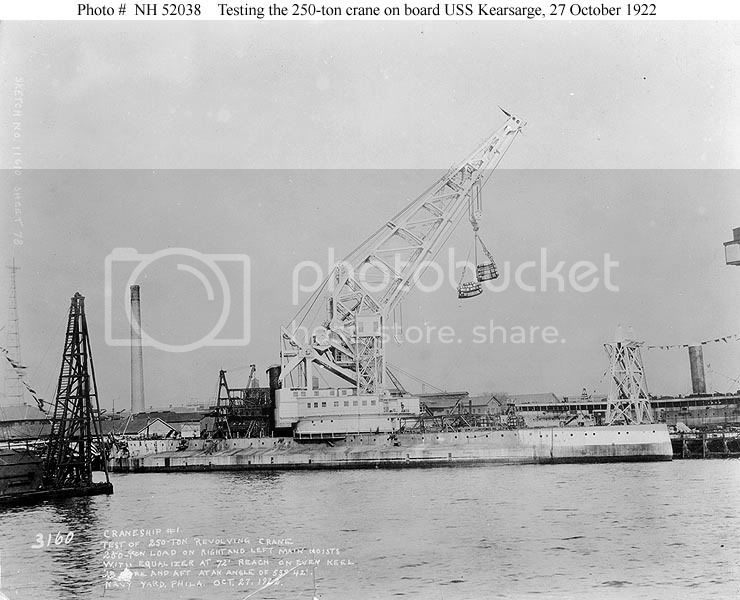
This is another picture of the testing of the ship's 250-ton revolving crane, while she was undergoing conversion at the Philadelphia Navy Yard, Pennsylvania, 30th of October 1922. Kearsarge is seen here lifting a 312-ton load on the right and left main hoist with equalizer at 101-foot reach on an even keel. Jib fore and aft at an angle of 38 degrees 46 minutes.
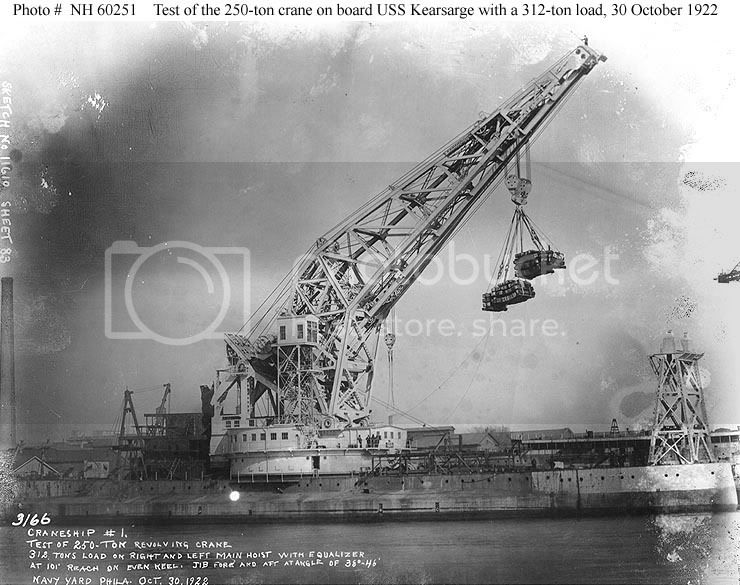
This is a picture whilst in dry dock at South Boston, Massachusetts, while undergoing repairs on 3rd of October 1925.
Note that her propellers were still fitted at this time.
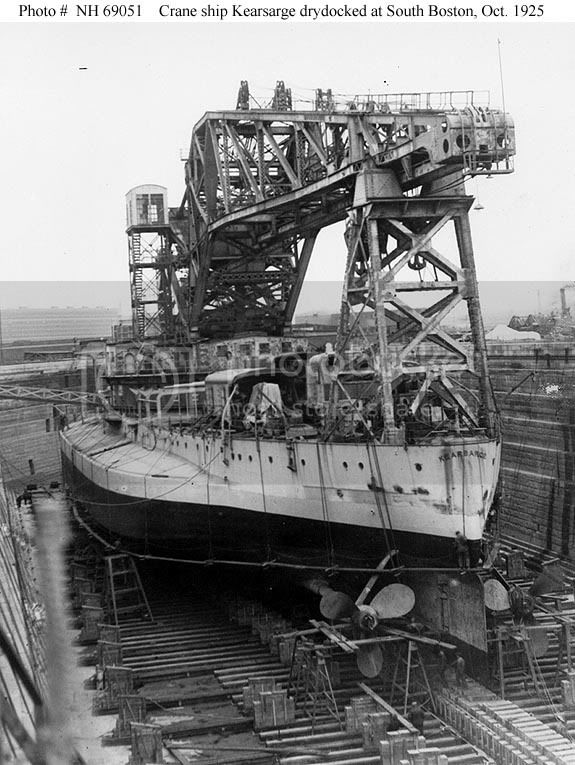
The USS Kearsarge passing through the Gaillard Cut, while transiting the Panama Canal during the 1920s or 1930s.
I love this picture.
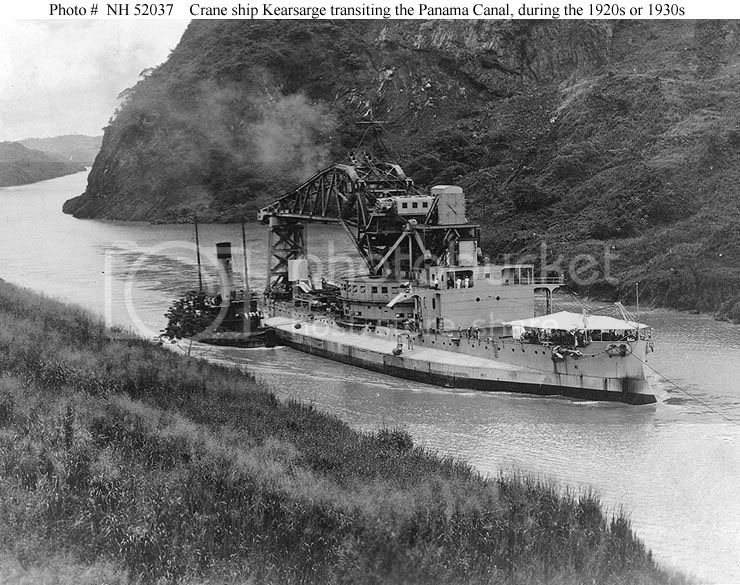
A picture of the Crane ship Kearsarge working alongside, as the battleship is regunned at the Puget Sound Navy Yard, Bremerton, Washington, circa the later 1920s.
Barge YC-279 is in the left background.
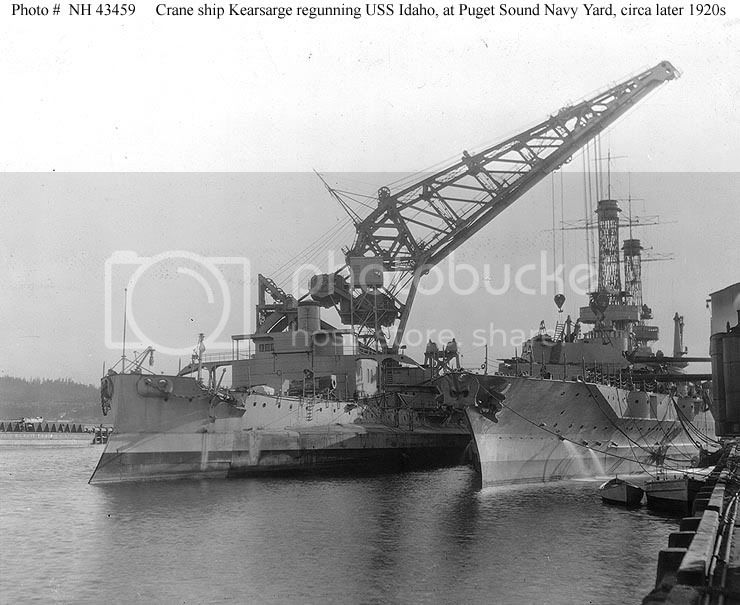
The USS Idaho (BB-42) is regunned at the Puget Sound Navy Yard, Bremerton, Washington, circa the later 1920s.
This view shows the crane ship Kearsarge lowering a 14"/50 gun into Idaho's second turret.
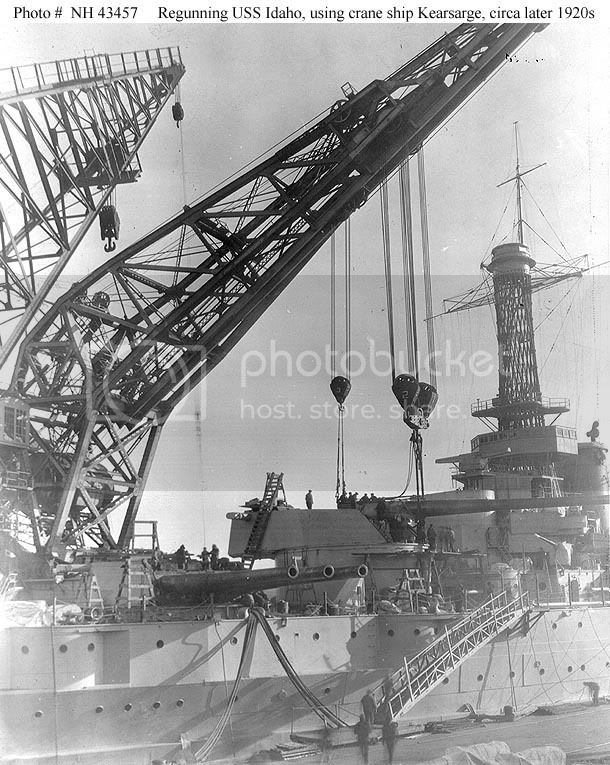
Another picture of the USS Idaho (BB-42) its 14"/50 gun is being lowered in to her second turret, during regunning at the Puget Sound Navy Yard, Bremerton, Washington, circa the later 1920s.
The work is being performed by the crane ship Kearsarge
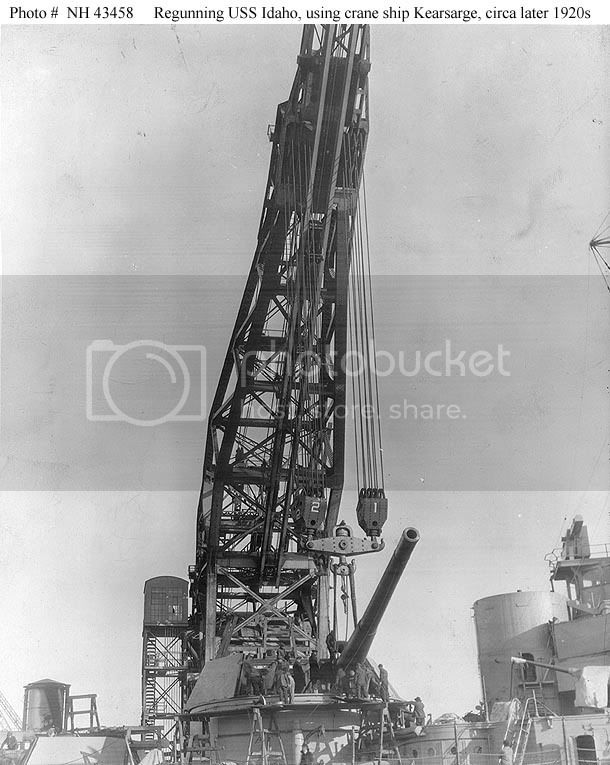
The SS Kearsarge (Crane Ship No. 1)at the Puget Sound Navy Yard, Bremerton, Washington, circa 1936.
Note that her stern bears both the names Kearsarge and "U.S. Crane Ship No. 1".
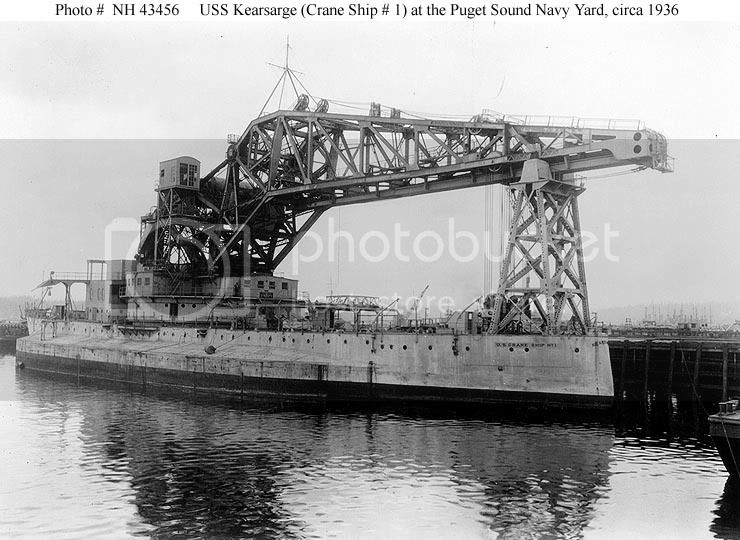
Regards
Sean












